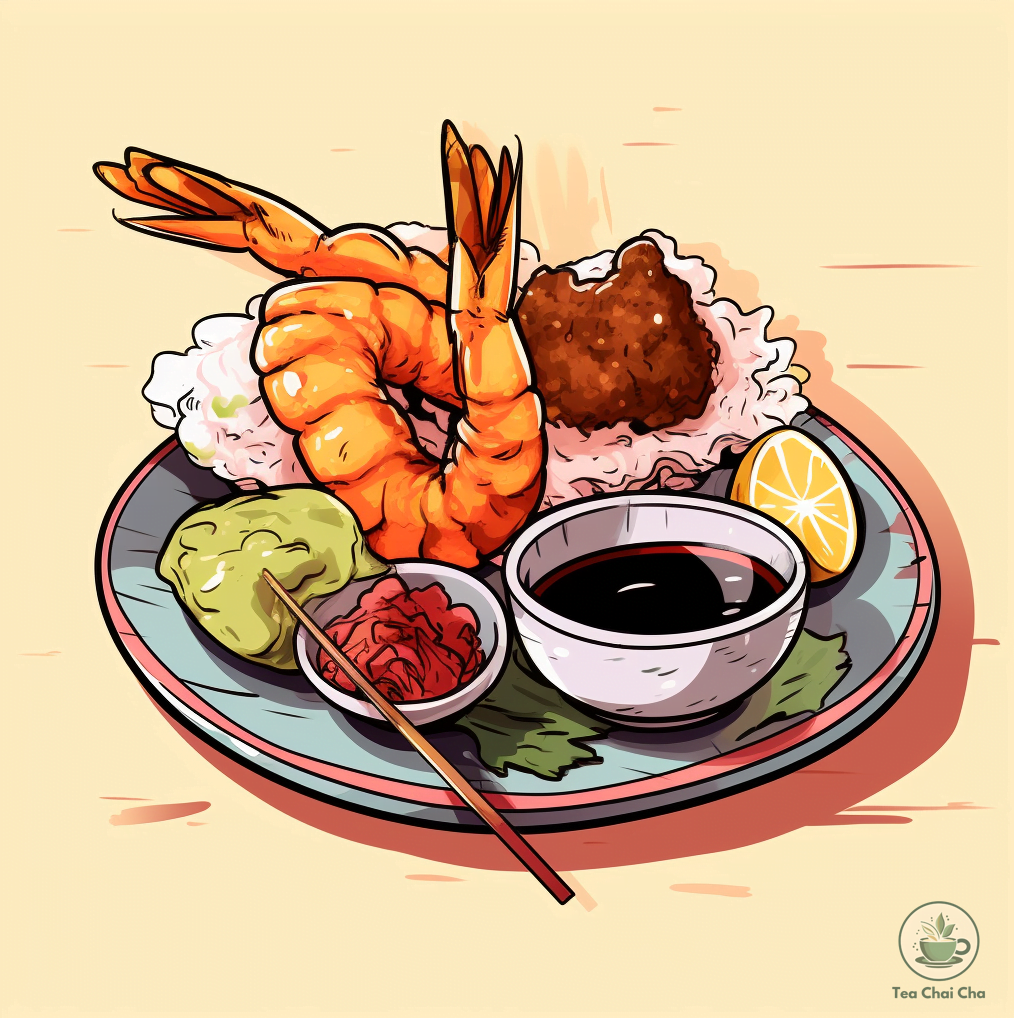When the sun’s cranking up the heat in Pakistan, there’s one thing that saves the day – fruit tea.
Trust me; it’s like a lifesaver in those scorching summers.
I can’t help but smile when I think about it. The way it cools you down and puts a pep in your step is just magical.
But here’s the kicker – it’s not just a local thing. People all over the world are sipping on fruit tea, and they’re loving it.
So, why is it so special, you ask?
Well, you’ve got all these fruity flavors dancing together in your cup, and it’s so darn refreshing.
Whether you’re a hardcore tea fan or just looking for a way to beat the heat, fruit tea’s got your back.
In this post, I’ll talk about nothing but fruit tea, different types, tips, recipes, and more!
What Is Fruit Tea?
Fruit tea is the refreshing superhero of beverages in the summertime.
It’s made from a blend of dried/fresh fruits, herbs, and spices.
Fruit tea is a tea (as it uses true teas like black, or green teas mostly), but not your grandma’s regular brew as it.
Now, let’s talk about variations, you’ll be happy to know that there are loads!
You’ve got your classic fruity flavors like berry, peach, and apple.
Then there are the exotic ones, like tropical fruit medley or citrus explosion.
And don’t even get me started on the herbal twists – minty mango, anyone? The possibilities are endless.
But where did this fruity magic come from?
Fruit tea has its roots in Asia, particularly in China, where they’ve been brewing it for centuries.
It then spread like wildfire, and now, you can find it pretty much everywhere. Talk about a globetrotter, huh?
As for its history, well, it’s been warming hearts and cooling bodies for ages.
People have been sipping on fruit tea for generations, and it’s not hard to see why. It’s just made for your taste buds on a scorching day.
And speaking of love, people adore it very much!
Whether you’re a tea aficionado or just someone who appreciates a good thirst quencher, fruit tea has a way of winning hearts.

What You Need to Make Fruit Tea
Ready to make your first pitcher of fruity tea?
Well, let me spill the tea on what you need to make the magic happen, and I promise it’ll be as easy as pie…or should I say tea?
Ingredients for Fruit Tea
1. Fruits
Yep, fruits are the main ingredients here.
Go for fresh or dried ones, like strawberries, peaches, or apples.
Get wild and try exotic stuff like passionfruit.
The more colors, the merrier – we’re throwing a fruity fiesta!
2. Tea Leaves or Tea Bags
You need tea, right?
Choose your base wisely, whether it’s black, green, white, or herbal.
Tea bags are easy-peasy, but loose leaf tea packs more flavor.
3. Sweetener
Sugar, honey, or agave syrup – they’re the sweet sidekicks.
Add ’em in to make your tea dance with sweetness.
Don’t be shy; you’re the tea boss!
4. Water
Good quality H2O does the trick.
Use filtered water so your fruity flavors shine, not chlorine.
Nobody likes a chlorine-flavored tea, right?
5. Extras
Get fancy if you want.
Toss in lemon or orange slices for zing, a cinnamon stick for a spicy twist, or fresh herbs like mint or basil for an extra kick.
Tools for the Tea Party
1. Kettle or Pot
You need hot water! Heat it up in a kettle or a pot.
Just make sure they’re clean – no one wants funky-flavored tea.
2. Teapot or Infuser
If you’re using loose leaf tea, a teapot with an infuser or a separate infuser basket keeps things neat.
But if you’re a tea bag fan, you’re all set.
3. Mugs or Cups
You’re not an animal (well, we are social animals!); you need something to sip from.
Grab your favorite mug or cup and make it your tea-buddy for this fruity adventure.
4. Spoon
A spoon is your swizzle stick and can rescue tea bags or infusers when the brew’s just right.
5. Strainer
If you’re going full fruit-crazy with loose leaf tea and chunky fruit bits, a strainer or a fine sieve keeps your cup clutter-free.
No one wants a fruity surprise in every sip!
Perhaps, I’m “no one”! 😉

How to Make Fruit Tea From Scratch
Making fruit tea from scratch is a fantastic way to enjoy a delicious and refreshing drink.
In this section, I’ll walk you through the process, and you’ll even have choices in how you prepare your fruit for your tea.
Step 1: Gather Your Ingredients
First, gather these basic ingredients:
Ingredients
Fruit of Your Choice
You can choose from various fruits like berries, peaches, apples, oranges, or even a combination of fruits.
About 1 cup of fruit will do the trick.
Tea Leaves or Tea Bags
You can use black tea, green tea, or herbal tea depending on your preference.
For one serving, you’ll need 1 tea bag or 1 teaspoon of loose tea leaves.
Water
Approximately 2 cups of water per serving.
Sweetener
This is optional and depends on your taste.
You can use honey, sugar, agave syrup, or even a sugar substitute like stevia.
Start with 1-2 tablespoons and adjust to your liking.
Ice Cubes
If you prefer your fruit tea cold, have some ice cubes ready.
Now that you’ve gathered your ingredients, let’s move on to the next step.
Step 2: Choose Your Fruit Preparation Method
Here’s where you can get creative with how you prepare your fruit for your tea.
You have a few options:
Option 1: Chopped Fruits
Wash and chop your chosen fruit into small pieces.
If you’re using berries, you can leave them whole.
Remove any seeds, pits, or tough skins as needed.
Chopped fruits work well for infusing flavor directly into the tea.
Option 2: Mashed Fruits
Mash your fruit using a fork or a potato masher.
This works great for soft fruits like strawberries or raspberries.
The mashed fruit will blend well with the tea.
Option 3: Fruit Syrup
To make a fruit syrup, combine your fruit with sugar (1 cup fruit to 1/2 cup sugar) in a saucepan.
Cook on low heat, mashing the fruit as it simmers, until it forms a syrup-like consistency.
Strain to remove any solids, and you’ll have a flavorful fruit syrup to add to your tea.
Step 3: Boil the Water
Place a pot on the stove and add 2 cups of water.
Bring it to a boil.
Once it’s boiling, turn off the heat.
The temperature should be between 180 degrees to 212 degrees depending on the tea type.
Step 4: Steep the Tea
Add your tea bag or loose tea leaves to the hot water.
Let it steep for about 3-5 minutes.
The steeping time depends on your tea type and how strong you like it.
Step 5: Add the Fruit or Fruit Syrup
After steeping the tea, remove the tea bag or strain the loose leaves if necessary.
Now, it’s time to add your prepared fruit or fruit syrup into the hot tea.
This will allow the fruit flavors to infuse into the tea.
Step 6: Sweeten to Taste
If you prefer your fruit tea sweet, add your chosen sweetener at this point.
Start with 1-2 tablespoons, give it a stir, and adjust to your liking.
Remember, you can always add more, but you can’t take it out if it’s too sweet!
Step 7: Cool and Serve
If you want your fruit tea cold, let it cool to room temperature, then refrigerate it for an hour or add ice cubes for instant refreshment.
If you prefer it hot, you can enjoy it right away.

How to Make Southern Fruit Tea – Tennessee Fruit Tea Recipe
If you’re in the mood for a taste of Southern hospitality, Tennessee fruit tea is what you need.
Now, we’re about to whip up a refreshing glass of Tennessee Fruit Tea, a delightful Southern classic.
Let’s get started!
Step 1: Gather Your Ingredients
Here’s what you’ll need for a batch of Tennessee Fruit Tea:
Ingredients
1. Tea Bags: Grab 4 regular black tea bags or 2 family-sized ones.
2. Water: You’ll need 8 cups of water (that’s 2 quarts).
3. Sugar: Get ready for some sweetness – 1 cup of granulated sugar.
4. Orange Juice: 1 cup of freshly squeezed orange juice.
5. Lemon Juice: Freshly squeeze 1/4 cup of lemon juice for a tangy twist.
6. Pineapple Juice: Add a tropical touch with 1 cup of pineapple juice.
7. Canned Peaches: Open up a 15-ounce can of sliced peaches, juice and all.
8. Canned Pineapple Chunks: Grab a 15-ounce can of pineapple chunks, also with the juice.
9. Maraschino Cherries: Finish it off with some sweet cherries – 1/2 cup of them.
Now that we’ve got our ingredients in order, let’s move on to the next step.
Step 2: Brew the Tea
Take a large saucepan or pot and bring 8 cups of water to a boil.
Once it’s boiling, add your tea bags.
Let those tea bags steep for about 5-7 minutes. This will give your tea a robust flavor.
Step 3: Sweeten Things Up
After your tea has steeped, remove the tea bags.
While it’s still hot, stir in 1 cup of granulated sugar until it dissolves completely.
Step 4: Fruit Infusion
Now, let’s bring in the fruity goodness.
Add the sliced peaches (with their juice), pineapple chunks (with their juice), and those lovely maraschino cherries.
Step 5: Citrus Zest
Squeeze the fresh orange and lemon juice right into the pot. This will give your tea a zesty kick.
Step 6: Chill Out
Let your Tennessee Fruit Tea cool down.
You can refrigerate it for a few hours or serve it over ice if you can’t wait!
Step 7: Sip and Savor
Pour yourself a glass of this sweet, fruity concoction, kick back, and enjoy a taste of Southern heaven.

Asian Fruit Tea Recipe
Asian Fruit Teas come in a wide variety of flavors and origins, each with its unique twist.
Whether you prefer the sweet and tangy taste of tropical fruits or the earthy notes of dried fruits, there’s an Asian Fruit Tea for everyone.
Some popular types include Taiwanese Fruit Tea, Korean Citron Tea, and Chinese Lychee Black Tea.
Now, let’s dive into making your own Asian Fruit Tea, starting with the basics.
Step 1: Choose Your Fruit
The first step is to decide whether you’d like to use fresh or dried fruits. Here are your options:
Option 1: Fresh Fruits
Ingredients
- 1 cup of fresh fruits (e.g., apples, oranges, strawberries, or a mix)
- 2 cups of water
- 1-2 tea bags or 1-2 teaspoons of loose tea leaves (black or green, based on preference)
- Sweetener (honey, sugar, or your choice)
Fresh fruits bring a burst of natural sweetness and a vibrant flavor to your tea.
Pick your favorites or combine different fruits for a unique blend.
Option 2: Dried Fruits
Ingredients
- 1/4 cup of dried fruits (e.g., dried apricots, dates, or raisins)
- 2 cups of water
- 1-2 tea bags or 1-2 teaspoons of loose tea leaves (oolong or black tea works well)
- Sweetener (if desired)
Dried fruits add a rich, concentrated sweetness to your tea.
They’re perfect for a cozy and comforting brew.
Step 2: Prepare Your Fruit
For Fresh Fruits
Wash and chop your chosen fruits into small pieces.
You can leave the skins on if they’re edible, as they add extra flavor.
Remove any seeds or pits.
For Dried Fruits
If using larger dried fruits like apricots or dates, chop them into smaller pieces to help release their flavors during steeping.
Step 3: Brew Your Tea
In a pot, bring 2 cups of water to a boil.
Add your tea bag or loose tea leaves and let them steep for 3-5 minutes.
Adjust the steeping time to your preference; longer steeping yields a stronger tea.
Remove the tea bag or strain the loose leaves.
Step 4: Infuse Your Tea
For Fresh Fruits
While the tea is still hot, add your fresh fruits to the pot.
Let them steep for an additional 5-7 minutes, infusing the tea with their natural sweetness.
For Dried Fruits
Place the dried fruits directly into your teacup or teapot.
Pour the hot tea over them and let it steep for 5-7 minutes, allowing the dried fruits to rehydrate and release their flavors.
Step 5: Sweeten to Taste
Add sweetener to your tea if desired.
Start with a teaspoon and adjust to your preference.
Asian Fruit Tea can be enjoyed both sweet and unsweetened.
Step 6: Sip and Savor
Your Asian Fruit Tea is now ready to enjoy!
Sip it hot or let it cool and serve it over ice for a refreshing twist.
Experiment with different fruit and tea combinations to find your perfect Asian Fruit Tea blend.

How to Make Fruit Bubble Tea – Fruit Boba Tea
If you’ve ever strolled through the streets of Taiwan, you might have encountered this delightful drink.
Fruit bubble tea, also known as “fruit boba tea,” is a refreshing blend of tea, fruit flavors, sweeteners, and chewy tapioca pearls.
There’s a world of variety when it comes to fruit bubble tea.
You can find classics like strawberry, passion fruit, and mango, as well as unique concoctions that combine different fruits and teas.
Originating from Taiwan, bubble tea has become a global sensation with various regional twists and flavors.
Now, let’s dive into the process of making your very own fruit bubble tea, and I’ll even share some options to help you customize it to your taste.
Step 1: Gather Your Ingredients
First things first, let’s gather the essential ingredients for your fruit bubble tea:
Ingredients
1. Tea: Choose your tea base. Black tea and green tea are popular options.
You’ll need 1-2 tea bags or 1-2 teaspoons of loose tea leaves per serving.
2. Fruit: Pick your fruit flavor. Common choices include strawberry, mango, peach, or lychee.
You’ll need about 1/2 cup of fresh or frozen fruit per serving.
3. Tapioca Pearls: These are the delightful chewy bubbles that make bubble tea unique.
You can find them at Asian grocery stores or online.
Plan for 1/4 cup of dried tapioca pearls per serving.
4. Sweetener: Customize your sweetness with sugar, honey, or a sugar substitute.
Start with 2-3 tablespoons and adjust to taste.
5. Ice Cubes: For that cool and refreshing finish, have some ice cubes ready.
Step 2: Brew Your Tea
Start by brewing your tea. If you’re using tea bags, steep them in hot water for 3-5 minutes.
If you have loose tea leaves, use a tea infuser or strainer.
Once brewed, let it cool to room temperature.
Step 3: Prepare Your Fruit
While your tea is cooling, prep your fruit.
Wash it thoroughly, peel if necessary, and chop it into small pieces.
Fresh fruit adds a burst of natural flavor.
Step 4: Cook Tapioca Pearls
Follow the instructions on your tapioca pearl package for cooking.
Usually, it involves boiling them until they become soft and chewy.
Drain them and let them cool.
Step 5: Blend Fruit and Sweetener
In a blender, combine your chopped fruit and sweetener. Blend until smooth.
This fruity mixture will be the base of your fruit bubble tea.
Step 6: Assemble Your Fruit Bubble Tea
In a glass, add a handful of ice cubes.
Pour in your cooled brewed tea, filling it about halfway.
Then, gently pour in your fruity mixture until the glass is nearly full.
Step 7: Add Tapioca Pearls
Lastly, scoop your cooked tapioca pearls into the glass.
They’ll sink to the bottom, creating that iconic “bubble” effect.
Step 8: Mix and Enjoy!
Give your fruit bubble tea a good stir with a thick straw, and sip away!
The combination of fruity flavors and chewy tapioca pearls is an absolute delight.
Feel free to get creative with different fruit and tea combinations, and remember that the sweetness level is entirely up to you.

Hot or Cold? Enjoying Fruit Tea Your Way
One of the beautiful things about fruit tea is its versatility – you can enjoy it hot or cold, depending on your mood and the weather.
Let’s explore how people savor different types of fruit teas from around the world, including Chinese, Japanese fruit teas, and more.
Hot Fruit Tea
Chinese Fruit Tea (热水果茶) Rè shuǐguǒ chá
In China, hot fruit tea is a cherished tradition.
It’s often made by steeping dried fruits like hawthorn, jujube, and goji berries in hot water.
This warm, fruity concoction is known for its soothing qualities and is often enjoyed in winter to ward off the chill.
Japanese Yuzu Tea (柚子茶) Yuzu cha
In Japan, yuzu fruit is celebrated for its unique citrusy aroma.
To make hot yuzu tea, the fruit is sliced, and the slices are steeped in hot water.
This aromatic beverage is a favorite during the colder months and is believed to have immune-boosting properties.
Cold Fruit Tea
Japanese Cold Green Tea with Plum (梅干し茶) Umeboshi cha
In Japan, a refreshing cold green tea is prepared by infusing green tea with umeboshi (pickled plum) flavors. It’s a delightful combination of sour and sweet, perfect for hot summer days.
Thai Iced Tea with Tamarind
In Thailand, a popular cold fruit tea is made by blending black tea with tamarind pulp, sugar, and condensed milk.
It’s poured over crushed ice and is a sweet and tangy treat on a hot day.
Korean Plum Tea (매실차)
In Korea, plum tea is a delightful and refreshing cold beverage.
It’s made by steeping dried or pickled plums in cold water, sometimes with added honey or sugar for sweetness.
Korean plum tea is particularly popular during the summer months for its thirst-quenching qualities.
More Fruit Tea Ideas
Minty Moroccan Fruit Tea
In Morocco, they make a delightful hot or cold fruit tea known as “Moroccan mint tea.”
It combines green tea, fresh mint leaves, and sweetened with sugar.
It’s wonderfully refreshing, whether served steaming hot in a traditional tea ceremony or poured over ice.
Russian Berry Tea (Компот)
Russians enjoy “compot,” a fruit tea made by simmering a mixture of dried or fresh fruits with water and sugar.
It’s often served cold and is a favorite at family gatherings.
Iced Fruit Tea vs. Cold Brew Fruit Tea: What’s the Difference?
When it comes to refreshing fruit tea, there are two popular ways to chill it: making traditional iced fruit tea and preparing cold brew fruit tea.
Both methods are fantastic for cooling down on hot days, but they offer unique flavors and brewing techniques.
Let’s explore the differences between the two.
| Aspect | Iced Fruit Tea | Cold Brew Fruit Tea |
| Brewing Method | Brewed with hot water, then cooled with ice. | Steeped in cold water in the refrigerator for an extended period (typically 4-8 hours or overnight). |
| Fruit Infusion | Fruits are added to hot tea while brewing. | Fruits are combined with tea and cold water, infusing slowly over time. |
| Sweetening | Sweetener (e.g., honey, sugar) is added while the tea is still warm. | Fruit syrup, if used, is added after the steeping process. |
| Steeping Time | Relatively short steeping time (while hot). | Longer steeping time in the cold (4-8 hours or overnight). |
| Flavor Intensity | Stronger and more immediate fruit flavor. | Subtle and mellow fruit infusion. |
| Temperature | Brewed hot and then chilled with ice. | Brewed and served cold. |
| Time Investment | Faster preparation, typically within a few hours. | Longer preparation time, usually overnight. |
| Refreshing Qualities | Quick refreshment with strong fruit aroma. | A gentle, smooth, and refreshing infusion. |
| Visual Appeal | Often served with visible fruit chunks and ice. | Typically clear and visually simple. |
| Ideal Occasions | Great for a quick cooling drink on a hot day. | Perfect for a leisurely, refreshing sip. |

Iced Fruit Tea
Iced fruit tea is a quick and straightforward way to enjoy a chilled fruit-infused tea.
Here’s how it’s done:
1. Brew the Tea: Start by brewing your favorite tea as you normally would, using hot water.
You can choose black tea, green tea, or herbal tea, depending on your taste.
2. Add Fresh Fruits: While the tea is still hot, add slices or chunks of fresh fruits to the hot tea.
This allows the fruit flavors to meld with the tea as it cools down.
3. Sweeten to Taste: Sweeten the tea with your preferred sweetener, like honey or sugar, while it’s still warm.
Stir until the sweetener is dissolved.
4. Cool It Down: Let the tea cool to room temperature before transferring it to the refrigerator.
Once it’s cool, chill it in the fridge for a few hours or until it’s nice and cold.
5. Serve Over Ice: When you’re ready to enjoy, pour the iced fruit tea over ice cubes and garnish with additional fruit slices if desired.
Cold Brew Fruit Tea
Cold brew fruit tea is a bit different and involves a slower, gentler infusion process.
Here’s how you can make it:
1. Combine Tea and Fresh Fruits: In a pitcher, combine your tea leaves or tea bags with cold water.
Then, add fresh fruit slices or chunks for added flavor.
2. Refrigerate It: Cover the pitcher and place it in the refrigerator.
Let it steep for at least 4-8 hours, or even overnight.
This slow steeping process extracts the flavors gently.
3. Make Fruit Syrup: While your tea is steeping, you can prepare a fruit syrup by simmering fruit with sugar and a little water until it thickens.
Once cooled, strain it.
4. Add the Fruit Syrup: After your tea has steeped, remove the tea bags or strain the tea leaves.
Add your homemade fruit syrup for an extra burst of fruitiness and sweetness.
5. Serve Chilled: When you’re ready to enjoy, pour the cold brew fruit tea over ice and add fresh fruit slices for a delightful visual and flavor touch.

How to Make Fruity Herbal Tea – Sun Tea Method
When it’s a sunny day, there’s no better way to brew a refreshing and naturally sweet fruity herbal tea than with the gentle warmth of the sun.
Plus, remember, you can always use the methods mentioned earlier for your fruity herbal tea too.
Ingredients
1. Herbal Tea Bags or Loose Leaf Herbal Tea
Choose your favorite fruity herbal tea blend.
You’ll need 2 tea bags or 2 tablespoons of loose leaf tea for a quart-sized jar of Sun Tea.
2. Fresh or Dried Fruits
Pick your choice of fruits to infuse your tea.
Citrus fruits like oranges, lemons, and limes work wonderfully.
You can also use berries, apple slices, or even pineapple chunks.
About 1/2 cup of fruit per quart of water should do.
3. Water
You’ll need about 4 cups of cold, filtered water.
4. Sweetener (Optional)
If you like your tea on the sweet side, you can add honey, sugar, agave syrup, or any sweetener of your choice.
Start with 1-2 tablespoons and adjust to taste.
5. Sunshine
Find a sunny spot outside where your tea can bask in the sun.
Instructions for Making Fruity Herbal Sun Tea
1. Select a Glass Jar: Find a quart-sized glass jar with a lid.
It’s important to use glass as it won’t absorb flavors or chemicals like plastic might.
2. Add Herbal Tea: Place the herbal tea bags or loose leaf tea into the glass jar.
3. Add Fresh or Dried Fruits: Now, add your choice of fresh or dried fruits to the jar.
This is where you can get creative! Sliced citrus fruits, a handful of berries, or even a mix of different fruits can add unique flavors to your tea.
4. Fill with Water: Pour cold, filtered water into the jar, leaving some space at the top.
Use about 4 cups of water for a quart-sized jar.
5. Seal and Place in the Sun: Seal the jar with its lid and place it in a sunny spot, preferably outdoors, for about 2-3 hours.
The sun’s natural warmth will gently brew your tea.
6. Sweeten (Optional): After brewing, if you prefer your tea sweet, stir in your chosen sweetener until it’s fully dissolved.
7. Chill and Serve: Remove the tea bags and strain out the fruits if you prefer.
Then, refrigerate your Fruity Herbal Sun Tea until it’s cold and refreshing. Serve over ice and garnish with extra fruit slices if you like.

Herbs and Fruits to Add in Fruity Herbal Tea
When making fruity herbal sun tea, you have the flexibility to choose from a variety of herbs and fruits to create a delightful blend.
Here are some popular herbs and fruits to consider adding:
1. Hibiscus
Hibiscus flowers are a favorite for fruity herbal teas.
They add a vibrant red color and a tart, cranberry-like flavor.
Hibiscus pairs well with citrus fruits like oranges and lemons.
2. Chamomile
Chamomile flowers lend a soothing, apple-like aroma to your tea.
They’re perfect for creating a calming and mild fruity herbal tea.
Chamomile works well with fruits like apples or peaches.
3. Mint
Fresh mint leaves, whether spearmint or peppermint, can add a refreshing and cooling element to your tea.
Mint pairs nicely with berries, like strawberries or blueberries.
4. Lavender
Lavender blossoms provide a subtle floral note to your tea.
They’re excellent for adding a touch of elegance to your blend.
Lavender complements fruits like apricots and plums.
5. Lemon Balm
Lemon balm leaves offer a citrusy, lemony aroma and flavor.
They’re perfect for enhancing the citrus notes in your fruity tea.
Lemon balm pairs well with lemon, lime, or even orange.
6. Rosehips
Rosehips are the fruit of wild roses and are known for their tangy, slightly sweet taste.
They’re a great addition if you want to infuse your tea with a fruity, vitamin C-rich element.
7. Berries
Fresh or dried berries like strawberries, raspberries, blueberries, or blackberries can bring a burst of fruity sweetness to your tea.
They can be used alone or in combination with other herbs.
8. Apples
Sliced or dried apples add a natural sweetness and a subtle fruity taste.
They work well with many herbal tea blends.
9. Oranges
Orange zest or slices can provide a bright, citrusy flavor.
Pair them with herbs like chamomile or mint for a refreshing twist.
10. Lemons
Lemon slices or lemon zest can add a zesty, refreshing quality to your fruity herbal tea.
Combine with herbs like lavender for a unique flavor profile.


10 Tips for Making the Best Fruit Tea
Crafting the best fruit tea is an art that combines flavors, techniques, and a bit of creativity.
Through my tea journey, I’ve gathered some unique tips and tricks to help you elevate your fruit tea game.
1. Start with Fresh, Ripe Fruits
When making fruit tea, the quality of your ingredients matters.
Choose fresh, ripe fruits that are in season for the most vibrant and authentic flavors.
If fresh isn’t an option, high-quality frozen fruits can work wonders too.
2. Mix and Match Fruits
Don’t be afraid to get creative by combining different fruits.
Mixing sweet and tangy fruits can create a more complex and balanced flavor profile.
For example, try blending strawberries with citrus fruits like oranges or lemons.
3. Experiment with Spices and Herbs
Spices and herbs can elevate your fruit tea.
Add a cinnamon stick for warmth, a sprig of mint for freshness, or a slice of ginger for a spicy kick.
Be mindful of quantities; a little goes a long way.
4. Choose the Right Tea Base
Selecting the right tea is crucial.
Black tea offers robustness, green tea adds grassy notes, while herbal teas like chamomile or hibiscus can provide a floral or tart base.
Match the tea base to complement your chosen fruits and herbs.
5. Properly Brew Your Tea
Different teas require different steeping times and water temperatures.
Be sure to follow the recommended brewing instructions for your chosen tea.
Generally, avoid over-steeping to prevent bitterness.
6. Consider Cold Brewing
Cold brewing is an excellent method for fruit tea, especially in warm weather.
Simply place your tea and fruits in cold water and refrigerate overnight for a refreshing, naturally sweet drink.
7. Sweeten Thoughtfully
If you decide to add sweetener, do so sparingly. Start with a small amount, then taste and adjust as needed.
Natural sweeteners like honey or agave syrup can enhance the fruitiness without overwhelming it.
8. Let It Cool Gradually
When transitioning your fruit tea from hot to cold (or vice versa), allow it to cool or warm gradually.
This helps the flavors meld together and prevents sudden temperature changes that might alter the taste.
9. Experiment and Record
Keep a tea journal to note your experiments.
Record the fruit combinations, spices, herbs, and brewing times that you love.
This way, you can replicate your favorite blends and avoid mistakes.
10. Presentation Matters
The visual appeal of your fruit tea can enhance the overall experience.
Serve it in a clear glass or teapot to showcase the vibrant colors of the fruits and herbs.
A sprig of mint or a citrus twist can make a charming garnish.

Fruit Tea Food Pairing
Pairing food with your favorite fruit tea can elevate your tea-drinking experience to a whole new level.
Whether you’re sipping a hot cup of fruity herbal tea or enjoying a cold fruit-infused brew, here are some delightful sweet and savory food options to complement different types of fruit teas.
1. Pairing with Fruity Herbal Tea
Fruity herbal teas like hibiscus, chamomile, or berry-infused blends have a natural sweetness and a refreshing character.
Sweet Options
Fruit Salad: A fresh fruit salad with berries, citrus, and a drizzle of honey mirrors the fruity notes in your tea.
Shortbread Cookies: The buttery richness of shortbread cookies balances the tartness of hibiscus or berry herbal teas.
Savory Options
Goat Cheese and Crackers: Creamy goat cheese on whole-grain crackers provides a nice contrast to the sweetness of your tea.
Herbed Popcorn: Popcorn seasoned with rosemary, thyme, or other herbs complements the herbal notes in your tea.

2. Pairing with Citrusy Tea (e.g., Lemon or Orange)
Citrus-infused teas like lemon or orange teas have a bright and zesty character.
Sweet Options
Lemon Bars: The tangy sweetness of lemon bars pairs beautifully with lemon tea.
Orange Sorbet: A scoop of refreshing orange sorbet makes for a delightful dessert alongside your orange tea.
Savory Options
Grilled Shrimp: The citrusy tea complements the flavors of grilled shrimp, creating a harmonious combination.
Lemon-Herb Roasted Chicken: A lemon and herb-infused roasted chicken dish enhances the citrusy notes in your tea.

Pairing with Minty Tea (e.g., Peppermint or Spearmint)
Minty teas like peppermint or spearmint have a refreshing and invigorating quality.
Sweet Options
Chocolate Mint Brownies: The combination of chocolate and mint is a classic match for minty teas.
Mint Chocolate Chip Ice Cream: Mint chocolate chip ice cream provides a cool contrast to warm mint tea.
Savory Options
Greek Tzatziki: The coolness of tzatziki sauce pairs wonderfully with the minty freshness of your tea.
Minty Couscous Salad: A mint-infused couscous salad with fresh veggies complements the tea’s herbal notes.
My Pairing Tips!
1. Temperature Match
Consider the temperature of your tea and food.
Hot tea often pairs well with hot dishes, while iced tea can be refreshing alongside cold snacks.
2. Contrasting Textures
Experiment with textures.
Pair the smoothness of tea with crunchy snacks or the creaminess of tea with crisp foods.
3. Balance Intensity
Balance the intensity of flavors.
For strongly flavored teas, opt for foods that are equally bold, while milder teas can pair with more delicate dishes.
When to Sip on Fruity Delights: Perfect Occasions for Fruit Tea
Let’s explore some occasions that are perfect for sipping on this cool beverage.
From picnics to gatherings and everything in between, I’ve got you covered!
Picnics in the Park
There’s something magical about picnicking in the great outdoors, and fruit tea can make it even more special.
It’s refreshing, hydrating, and pairs wonderfully with sandwiches, fruits, and pastries.
Just brew a big batch, chill it, and pour it into thermoses or mason jars for a perfect picnic treat.
Don’t forget to pack some extra slices of lemon or fruit garnishes for that extra flair!
Tip: Freeze some fruit pieces in ice cubes to keep your fruit tea cold without diluting its flavor.
Backyard BBQs and Cookouts
When the grill is fired up and the air is filled with the tantalizing aroma of barbecue, fruit tea provides a cool and sweet contrast.
It’s an ideal beverage to balance the richness of grilled meats and savory side dishes.
Try pairing it with burgers, hot dogs, or grilled chicken for a memorable backyard feast.
Tip: Experiment with different fruit tea blends to find the one that complements your barbecue menu best.
Pool Parties and Beach Days
Nothing beats the heat like a pool party or a day at the beach.
Fruit tea, whether hot or cold, can be your go-to refresher.
Prepare a batch with tropical fruits like pineapple or mango for that beachy vibe.
Serve it in colorful cups with fun straws, and you’ve got the perfect beachside or poolside sipper.
Tip: Add a splash of coconut milk for a tropical twist, and don’t forget the sunscreen!
Family Gatherings and Holidays
Family gatherings are a prime opportunity to showcase your fruity herbal tea-making skills.
It’s a versatile beverage that can be enjoyed by guests of all ages.
Create a beautiful tea station with a variety of herbal blends and let everyone choose their favorite.
It’s a thoughtful addition to holiday feasts and celebrations.
Tip: Label each tea blend to help your guests make their selections easily.
Lazy Afternoons and “Me Time”
Sometimes, the best occasion to enjoy fruit tea is simply when you have a moment to relax and unwind.
Whether you’re curled up with a book on a rainy day or sitting in your favorite sunny spot, fruit tea is the perfect companion.
Sip it slowly, savor the flavors, and take a break from the hustle and bustle of everyday life.
Tip: Steep your tea a bit longer to intensify the flavors and create a truly indulgent experience.
Fruit Tea Recipe
Recipe by Tania FaysalCourse: DrinksCuisine: American4
servings10
minutes10
minutes30
kcal20
minutesPick your favorite fruits and whip up refreshing fruit tea with this easy, basic recipe!
Ingredients
4 cups of water
4 tea bags (black or green tea, or your preferred type)
1 cup of mixed fresh fruits (e.g., strawberries, peaches, oranges, and berries)
2 tablespoons of honey (adjust to taste)
Ice cubes (optional)
Fresh mint leaves for garnish (optional)
- Equipment
A medium-sized pot
A teapot or large heatproof pitcher
Tea strainer or infuser
Knife and cutting board
Wooden spoon
Serving glasses or mugs
Directions
- Prepare the Fruits: Wash and slice the fresh fruits into thin rounds or chunks, removing any seeds or pits. You can use any combination of fruits you like, depending on your preference and what's in season.
- Boil the Water: In a medium-sized pot, bring 4 cups of water to a boil.
- Steep the Tea: Once the water is boiling, turn off the heat and add the tea bags to the pot.
Allow the tea bags to steep in the hot water for 3-5 minutes, or follow the recommended steeping time for your chosen tea variety.
Adjust the steeping time according to your desired tea strength. - Remove the Tea Bags: Carefully remove the tea bags using a wooden spoon, pressing them gently against the side of the pot to extract any excess liquid.
- Add Fruits and Sweetener: While the tea is still hot, add the sliced fruits to the pot. This will infuse the tea with fruity flavors.
Stir in 2 tablespoons of honey, or adjust the amount to taste.
You can also use other sweeteners like agave nectar or sugar if preferred. - Cool and Chill: Allow the tea to cool down to room temperature, then transfer it to the refrigerator and let it chill for at least 1-2 hours. This will enhance the fruity flavors.
- Serve: Fill serving glasses or mugs with ice cubes (if desired). Pour the chilled fruit tea over the ice and garnish with fresh mint leaves.
Recipe Video
Notes
- Storing Brewed Fruit Tea: Store any leftover brewed fruit tea in a sealed container in the refrigerator for up to 2-3 days. However, it's best enjoyed fresh for optimal flavor.
- Prepping Ahead for Occasions: You can prepare this fruit tea a day in advance for special occasions. Just be sure to store it in the refrigerator until you're ready to serve. Add ice cubes just before serving to keep it refreshing.
- Making a Strong Brew: If you prefer a stronger fruit tea, simply steep the tea bags for a longer duration, but be cautious not to over-steep, as it can become bitter.
- Using Fruit Syrup: Instead of fresh fruits, you can use fruit syrups or concentrates for a quicker and more intense fruit flavor. Adjust the quantity to taste, and add syrup when the tea is still hot.
- Dried Fruits and Spices: If you are into hot tea, you can use dried fruits as well for a nice and rich flavor. For example, you can add dried apple spices with cinnamon stick and star anise to make apple spice tea.
Frequently Asked Questions (FAQs)
Is fruit tea good with milk?
Fruit tea and milk can be a delightful combination, but there are some important considerations:
1. Not for All Fruits
It’s important to note that not all fruit teas pair well with milk.
Strongly acidic fruits like citrus (e.g., lemon or orange) may curdle the milk due to their acidity, resulting in an undesirable texture.
So, exercise caution with acidic fruit teas.
2. Iced Bubble Tea
For iced fruit teas, they can be enjoyed like bubble teas with the addition of milk and sweeteners, creating a creamy and refreshing beverage.
This is especially popular in some Asian cultures, where fruity iced teas with milk are a favorite.
What is fruit tea good for?
Fruit tea is good for providing hydration, offering a burst of fruity flavors, and delivering antioxidants and vitamins from the fruit and herbs used.
It’s a great caffeine-free (if decaffeinated or no true tea base is used) option for those who enjoy sweet and flavorful beverages.
Which is the best fruit tea?
The best fruit tea is subjective and varies from person to person based on taste preferences.
Popular fruit tea flavors include berry blends, citrus-infused teas, and tropical fruit mixes.
My favorite is Citrus Green Tea, and Peach Tea!
Is it OK to drink fruit tea everyday?
Yes, it’s generally okay to drink fruit tea every day, especially if you choose caffeine-free options.
However, like any beverage, moderation is key. Be mindful of added sugars if you’re watching your sugar intake.
Which is better, milk tea or fruit tea?
Milk tea has a creamy, rich flavor, while fruit tea is fruity and refreshing. Both are delicious, so it’s a matter of what you’re in the mood for!
